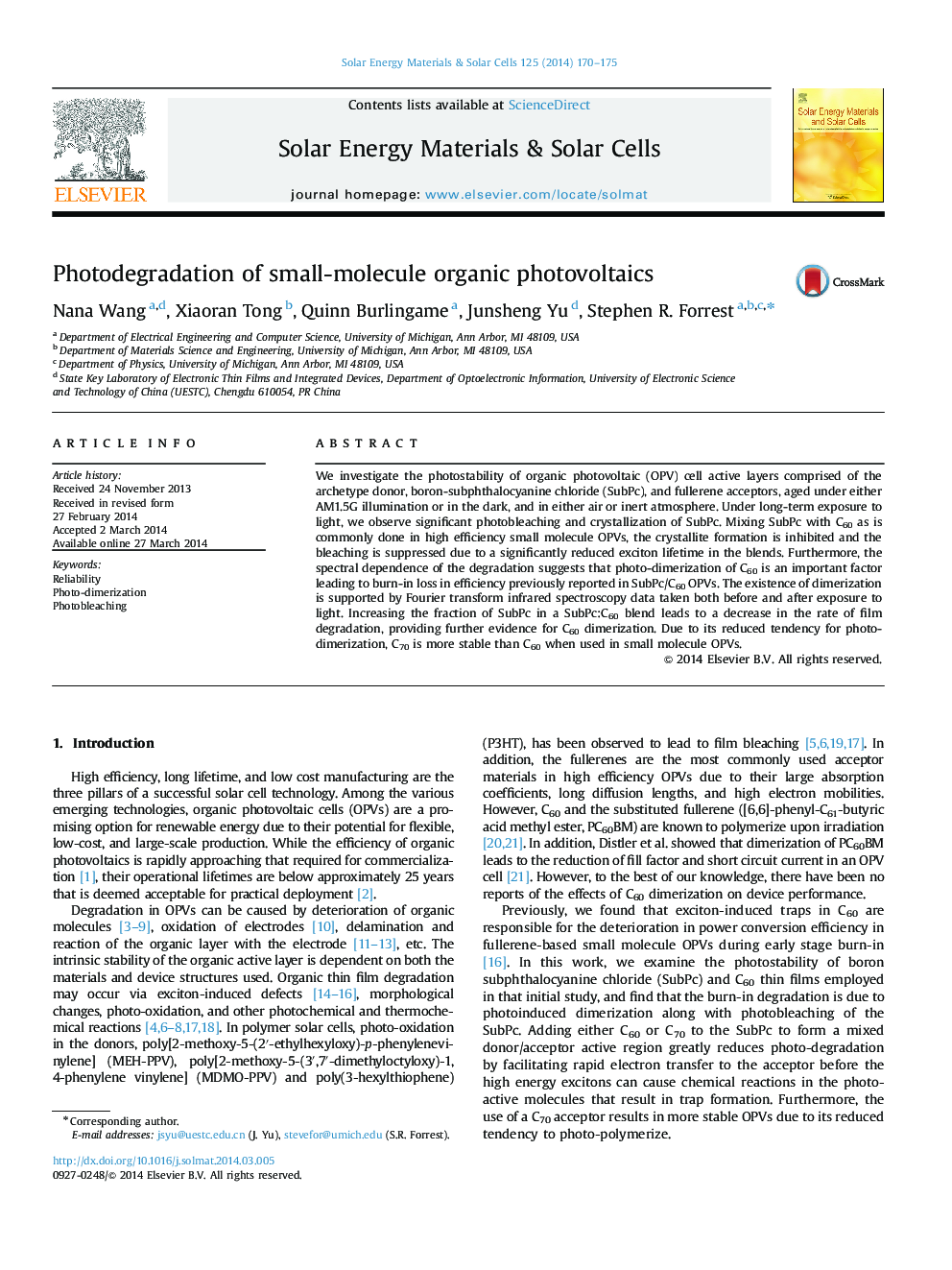| Article ID | Journal | Published Year | Pages | File Type |
|---|---|---|---|---|
| 78098 | Solar Energy Materials and Solar Cells | 2014 | 6 Pages |
•Photodimerization of C60 leads to material degradation in organic solar cells.•Donor-acceptor blend films have reduced tendency to crystallize.•Archetype materials of SubPc/C60 used in OPVs are investigated for their photostability.•Photodegradation correlated with previously observed burn-in efficiency losses in SubPc/C60 OPVs.
We investigate the photostability of organic photovoltaic (OPV) cell active layers comprised of the archetype donor, boron-subphthalocyanine chloride (SubPc), and fullerene acceptors, aged under either AM1.5G illumination or in the dark, and in either air or inert atmosphere. Under long-term exposure to light, we observe significant photobleaching and crystallization of SubPc. Mixing SubPc with C60 as is commonly done in high efficiency small molecule OPVs, the crystallite formation is inhibited and the bleaching is suppressed due to a significantly reduced exciton lifetime in the blends. Furthermore, the spectral dependence of the degradation suggests that photo-dimerization of C60 is an important factor leading to burn-in loss in efficiency previously reported in SubPc/C60 OPVs. The existence of dimerization is supported by Fourier transform infrared spectroscopy data taken both before and after exposure to light. Increasing the fraction of SubPc in a SubPc:C60 blend leads to a decrease in the rate of film degradation, providing further evidence for C60 dimerization. Due to its reduced tendency for photo-dimerization, C70 is more stable than C60 when used in small molecule OPVs.
